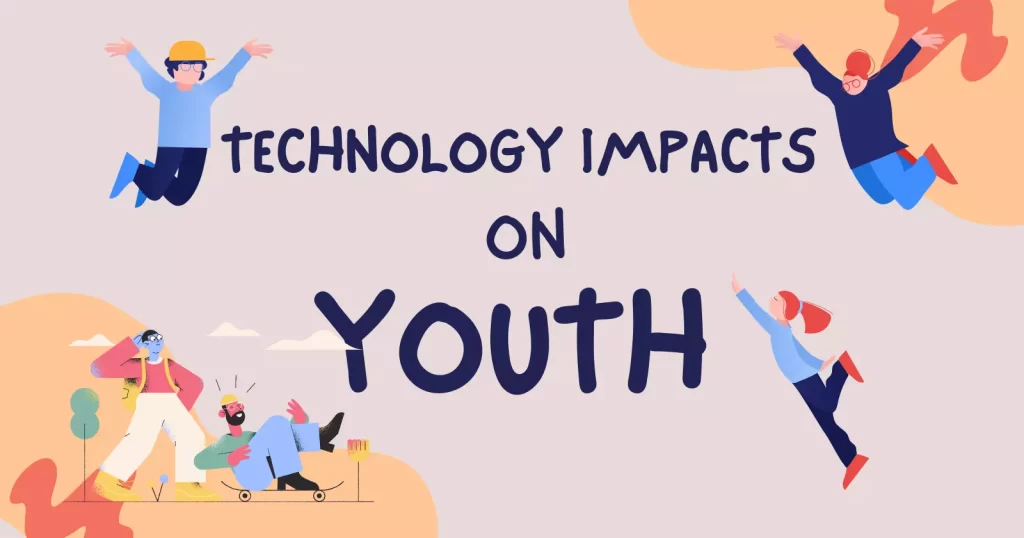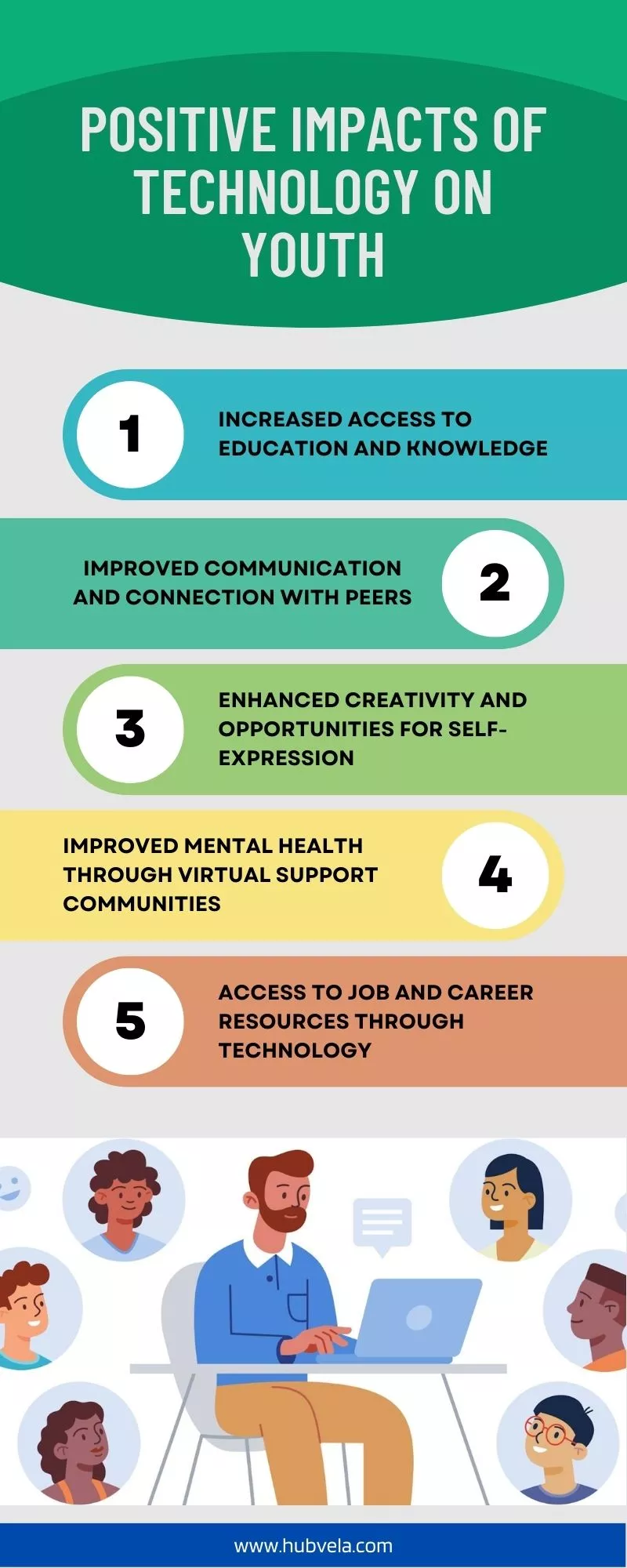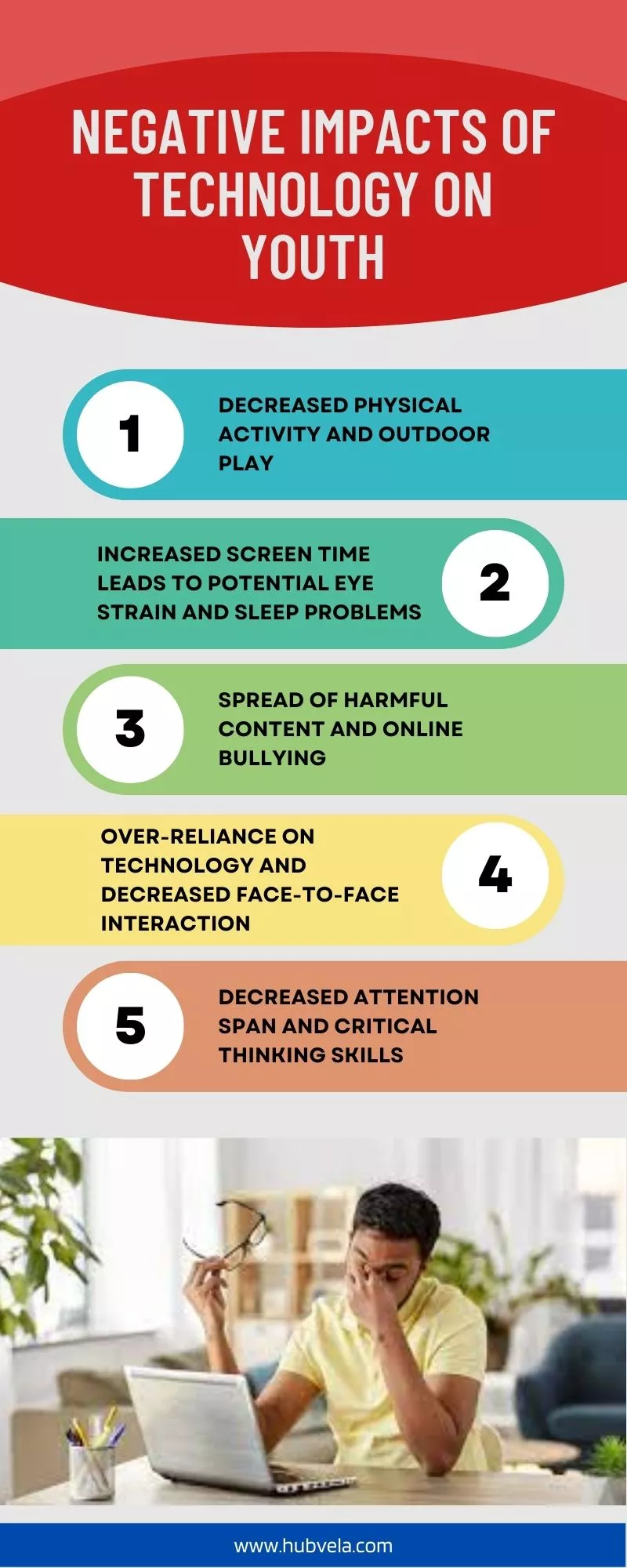Youth are undoubtedly impacted by technology, and it has become a constant part of our day-to-day lives. While it has brought about many positive changes, such as enhancing learning and promoting communication, it has also been associated with negative effects such as a need for instant gratification and loss of patience.
In this article, we will explore both the positive and negative impacts of technology on youth to provide a comprehensive understanding of its effects.

--Advertisement--
Positive Impacts of Technology on Youth
Technology has become an integral part of our daily lives, and its impact on youth is undeniable.
Technology can help children become independent learners more quickly, improve connectivity and communication, provide easy access to information, maintain supportive relationships, and positively influence their development overall.
Let’s explore some of the positive impacts of technology on youth in greater detail.

1. Increased access to education and knowledge
Increased access to education and knowledge is one of the positive impacts of technology on youth. Technology provides students with easy-to-access information, accelerated learning, and fun opportunities to practice what they learn.
Having access to technology can help children learn to investigate topics they find interesting. Educational and instructional practices, such as apps and online resources, can be very beneficial for early childhood education.
Technology also causes students to be more engaged in learning, which often leads to better retention of information.
2. Improved communication and connection with peers
Adolescents can enhance their friendship quality, perception of social support, and connectedness through online peer communication via social media.
Technology allows teenagers to stay connected with their friends and family, which is important for them.
Information and communication technology has a positive effect on student learning and should be included in classroom instruction
3. Enhanced creativity and opportunities for self-expression
Technology has had a positive impact on youth by enhancing creativity and opportunities for self-expression. Digital technology use can increase the ability to think creatively and reflect on social relationships.
Technology offers youth an opportunity to gain knowledge and skills with various topics that inspire creativity and build self-esteem.
The goals of some practices are to enhance students’ learning, self-expression, and creativity with projects and products, and build technology skills by using them.
4. Improved mental health through virtual support communities
Virtual support communities can have a positive impact on youth mental health, and technology plays a crucial role in facilitating these communities. Research has shown that young people are increasingly using digital tools to support their mental health.
Social media and messaging platforms can help them stay connected with loved ones and improve their emotional well-being. Virtual support groups can provide a safe space for young people to share their experiences, receive emotional support, and learn coping strategies.
5. Access to job and career resources through technology
With the increasing integration of technology in our everyday world, most jobs today require some level of technological proficiency.
Technology can help young people find job opportunities and access career resources online.
Online job boards, virtual career fairs, and e-learning platforms are just a few examples of how technology is helping young people prepare for their future careers.
Additionally, technology can provide students with project-based learning opportunities that promote creativity and collaboration in the classroom.
Overall, technology is helping young people develop the skills they need to succeed in the workforce and beyond.
Negative Impacts of Technology on Youth
The negative impacts of technology on youth are a growing concern for parents, educators, and mental health professionals.
Excessive use of technology can lead to anxiety, depression, addiction, and social isolation.
In this context, it is important to understand the negative effects of technology on youth to mitigate their impact and promote healthy usage habits.

1. Decreased physical activity and outdoor play
The increased use of technology among youth has led to decreased physical activity and outdoor play, which can have negative impacts on their health.
Studies have found that children who spend more time using technology tend to spend less time outside or engaged in physical activities.
This lack of exercise due to excessive screen time has been linked to obesity in children and other health problems.
Overuse of technology might also lead to poorer outcomes in adolescents including physical and behavioral issues.
The more children use mobile devices, the less they engage in physical activities. Therefore, it is important for parents and caregivers to encourage children to engage in outdoor play and physical activities as part of a healthy lifestyle.
2. Increased screen time leads to potential eye strain and sleep problems
Too much screen time can cause sleep problems, chronic neck and back problems, depression, anxiety, and lower test scores in children. Screen time is linked to a host of insomnia symptoms in teenagers by delaying the release of melatonin.
Excessive screen time can also cause eye fatigue, dry and irritated eyes, loss of focus flexibility, nearsightedness, retina damage, and blurred vision.
Therefore, it is important for parents to limit their children’s screen time to prevent these negative effects on their health.
3. Spread of harmful content and online bullying
Cyberbullying is a form of bullying that uses technology to harass, intimidate, or embarrass someone. It can take many forms, such as spreading lies or posting embarrassing photos or videos.
Cyberbullying can be even more distressing because it is very public and can spread quickly. According to a survey by Pew Research Center, 59% of U.S. teens have personally experienced at least one form of abusive online behavior.
It is important for parents, educators, and policymakers to take steps to prevent cyberbullying and promote positive online behavior.
4. Over-reliance on technology and decreased face-to-face interaction
Studies suggest that technology has a negative effect on both the quality and quantity of face-to-face communication.
This can lead to lower attention spans, social isolation, and neglecting personal engagement.
Overuse of mobile devices can also be harmful to children’s health, leading to physical problems such as eyestrain and less physical activity.
It is important for parents and educators to monitor children’s use of technology and encourage them to engage in more face-to-face interactions.
5. Decreased attention span and critical thinking skills
The use of technology can cause a shorter attention span, which can lead to difficulty in focusing on tasks for extended periods of time.
Additionally, the overuse of technology can minimize social interaction and lead to weaker social skills.
This can negatively affect children’s developing social skills, relationships, health, and overall ability to focus.
Furthermore, digital technology use has stronger effects on short-term markers of hedonic well-being than long-term measures of eudaimonic well-being, which may impact critical thinking skills.
Therefore, it is important for parents and educators to monitor children’s use of technology and encourage activities that promote critical thinking and social interaction.
Conclusion on the Positive and Negative Impacts of Technology on Youth
In conclusion, technology has both positive and negative impacts on youth. On the positive side, technology can improve connectivity and communication, enhance learning, foster problem-solving skills, and provide access to information.
However, it can also have negative effects such as negatively affecting social skills, relationships, health, and overall ability to focus. It is important for adolescents to learn and understand technology while also being aware of its potential drawbacks.
Parents and educators should guide children in using technology responsibly and safely by setting limits on screen time and teaching internet safety tips.
Ultimately, a balanced approach that maximizes the benefits of technology while minimizing its negative effects is key to ensuring that youth are able to thrive in a rapidly changing technological landscape.


